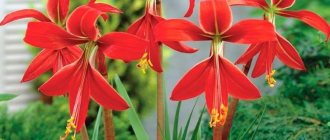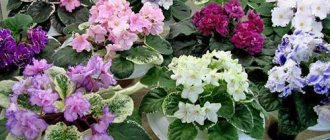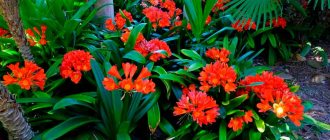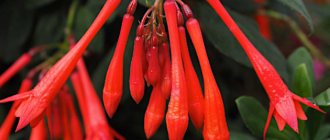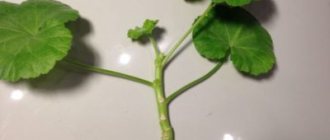Hello, dear friends!
Bulbous plants are a great success among flower lovers. And spring-flowering bulbous plants are the best decoration of the garden.
They paint the garden, awakened from sleep, with all the colors of the rainbow - from sunny yellow to dark purple, from soft blue to violet.
The world of bulbous plants amazes with its diversity, and if you choose the right bulbous plants, then we can admire them for six months, from early spring to late autumn.
Immediately after winter, flowers of small-bulbed primroses appear - snowdrops, chionodoxes, scillas (scylla), crocuses, muscari and others. I talked about these beloved colors in a previous article.
the daffodils , the first tulips , and the luxurious imperial hazel grouse begin to bloom .
The baton is picked up by decorative onions , blooming from late May to late July.
And in the summer we are delighted by the airy inflorescences of camassia , delicate ornithischians and, of course, fragrant majestic lilies .
In autumn, the last representatives of the bulbous species bloom - colchicum and autumn crocus .
Although the range of bulbous plants is very diverse, there are general rules for growing and caring for them. We will talk about these rules in this article.
Pests and diseases of bulbous plants
Various pests and diseases that affect the stems and plant bulbs themselves do not cause too many unpleasant moments, although they are found on them. Spring-flowering bulbs are less susceptible to diseases, since their flowering period ends before the pests in the garden wake up. But, despite this, the bulb located in the ground is at risk of developing various diseases and being attacked by pests. The main rule is prevention, and then pest and disease control.
Diseases of bulbous plants
- Bulb rot - includes
black macrosporiza, which attacks daffodil bulbs,
Fusarium rot, which affects the bottom of the bulbs,
botrytis - leads to rotting of the bulbs,
Tulip burn is an attack that affects the scales of the tulip bulb and appears as spots of fungal infection.
Treatment: pre-treatment of the soil before planting with fungicides, treatment of flowers with Bordeaux mixture (1% solution is sprayed three times per season - at the beginning of the growing season, during the flowering period, after the plants have bloomed).
- Variegation
is caused by a virus that does not affect the state of the plant itself, but stripes and spots appear on the petals of the flower that are not characteristic of a particular variety. This virus infects lilies and dahlias more often than usual. This disease has no cure.
As a preventive measure, mandatory disinfection of garden tools. The virus is transmitted by aphids, so it is necessary to combat them in a timely manner.
- Gray rot
the most severe disease for bulbous plants. It is characterized by the appearance of spots on the flowers, which very quickly become covered with mold. Most often, this disease progresses in dry weather. Affected buds are unable to open. Such flowers are immediately torn off, along with the affected leaves.
In order to protect your bulbs from viral infections, you need to treat them with preparations containing copper.
Pests of bulbous plants
- Thinworms are butterfly caterpillars that attack gladioli bulbs and destroy the plant from the inside.
- Bulb aphids - found under the outer scales of plants and occur when tulips, lilies and gladioli are not stored properly. This green aphid does not cause much harm to the plant, so there are no methods to combat it.
- Bulb and stem nematodes - affect irises, daffodils, hyacinths and tulips. The bulbs soften and begin to rot in the presence of nematodes. By cutting the bulb, you can see dark spots characteristic of nematode damage. Plant leaves begin to turn pale and curl, and yellow swellings may appear on the surface. Bulbs of this type are not planted, and in the area where they were, bulbs have not been planted for several years.
- Earwig - appears mainly on dahlias. It eats plant petals and creates many unsightly problems for the gardener. Such plants can be shaken occasionally, and if the need arises, the soil can be treated with an insecticide.
There are many drugs, both chemical and biological, for pest control. For example, biological preparations “Fitoverm”, “Lepidocid”
Garden bulbous flowers are used in a wide variety of landscape designs. These plants are planted in various types of flower beds, used to form continuous carpet plantings, Moorish lawns and create rocky gardens.
Video “Garden bulbous flowers - hyacinth”
Plant species that bloom in the spring lose their attractiveness in the summer. This is why they require proximity to suitable partners. It will be a useful experience to plant bulbous perennials in the vicinity of low-growing perennial plants - phlox, lilies, periwinkles. A type of neighborhood of this kind will also be useful in that it will be necessary to dig through the area from various weeds much less often, since weeds do not grow through perennials that cover the soil.
We purchase planting material
The best time to buy bulbs is when they are dormant - late July - September. When purchasing, be sure to check their condition. Bulbs must meet the following requirements:
- dense and heavy;
- shells intact;
- intact, without cuts or damage;
- without regrown roots and stems;
- The bottom is not damaged, without rot.
If you nevertheless bought bulbs whose stems and roots have begun to grow, then you need to immediately plant them in the ground.
The size of the planting material is also of great importance. Try to buy larger bulbs, then the plant will be stronger and bloom more profusely.
Forcing bulbs
Today, many amateur gardeners, in order not to miss their pets during the winter, force them to bloom in the cold. In order to do this, it is necessary to specifically select large bulbs and plant them in pre-prepared containers with soil. Medium-sized boxes or pots with a drainage hole in the bottom are suitable for this. The holes need to be covered with small pieces of expanded clay to ensure normal drainage of excess moisture. Next, you need to fill the container halfway with soil. The mixture can be different, both leaf and compost.
Video “Forcing tulips”
An important point is to prevent the bulbs from coming into contact with the walls of the planting container, as well as to prevent the bulb from touching the bulb. Planting material prepared in advance is stored at a temperature of 20 to 25 degrees, after October - at 18º. The cooling period should be 35 days at a room temperature of 9 degrees, followed by 70 days at 5 degrees. Before planting the bulbs, the soil must be disinfected. The bulbs are planted in such prepared containers at the end of September and finished in November. After the bulbs are planted, the soil is well watered and then moderate moisture is maintained during the cold season. Since the forcing period is quite short, fertilizing is not necessary. Such bulbs begin to bloom within a month, after the temperature rises to 15 degrees.
How to store it correctly
Before planting, bulbs should be stored in a cool and ventilated area (but not cold).
The bulbs of plants such as snowdrop, whiteflower, scilla, chionodoxa, and pushkinia are not covered with dry filmy scales, so we store them in slightly damp sawdust or peat in plastic bags.
Just don't forget to make holes in the bag to allow air access. It is advisable not to over-moisten the substrate in which the bulbs are stored, so that the plant does not begin to grow ahead of time.
The bulbs of hyacinths, daffodils, hazel grouse, tulips and decorative onions are not afraid of heat and even need it. A flower bud is formed in them at high temperatures and in dry conditions. But even here you need to know when to stop.
General principles of plant care
In order for plants to be healthy and enjoy lush flowering, it is necessary to properly care for them. Typically, any bulbous plants are placed on a bright windowsill, but lighting, as well as temperature and humidity indicators, should be studied and observed individually for each type. Watering is carried out carefully, since waterlogging is dangerous for such crops. The frequency is reduced after flowering and with the beginning of the foliage dying. Potassium, phosphorus and nitrogen are recommended. It is also important to provide pets with a period of rest within the prescribed period.
When is the best time to plant?
We plant bulbs of plants that bloom in spring in September - early October. If the weather is warm for a long time in the fall, then planting is possible until the beginning of November.
But still, this work should not be delayed until frost.
Colchicums must be planted in August - early September and no later. After all, they should already bloom in mid-September.
Large plants
A separate group should include bulbous house plants, the height of which can be up to 1 m. Large crops include hybrid canna, hippeastrum, amaryllis, wallot and eucharis.
Canna hybrid
This indoor resident can grow up to 1 m. Canna is characterized by the presence of light and dark green, as well as bronze-red leaves. Another oblong leaf can be brown, have a violet tint and can even be striped. On the stem you can see large flowers, painted in delicate pink, red, cream, purple, orange and yellow tones.
Hippeastrum
This is a homely beauty, the bulb of which is up to 11 cm in diameter. 1-6 funnel-shaped flowers may appear on the stem and usually bloom in spring and winter. Among the types of hippeastrum there are royal, graceful, reticulated, striped and Leopold's hippeastrum. If such a crop is not given time to rest, it will refuse to bloom.
Amaryllis
Flower growers most often grow amaryllis belladonna in their homes. Amaryllis is a close relative of hippeastrum. It has an elongated bulb up to 5 cm in size, the color of the foliage is dark green. It blooms from April to May with white and pink funnel-shaped specimens, collected in an umbrella in quantities of up to 12 pieces. Requires a good one with a mandatory transplant once every 1–2 years (like hippeastrum).
Vallota
In indoor conditions, you can plant and grow a beautiful crop called wallota. This bulbous flower has dark green foliage with a reddish tint at the base, and umbels of white, bright red and salmon-colored flowers appear on a long stem. This herbaceous perennial in a pot is best placed on a southern, southwestern, western or eastern windowsill.
Eucharis
These tall plants are native to Peru and Colombia and are also known as Amazon lilies. They can also be planted in pots and kept in an apartment or house. Eucharis look like daffodils: they are white with a pleasant smell, grow in umbrellas and bloom in the fall - from October to winter. Adult crops have 2 peduncles; 3 flowers appear on a long stem up to 50 cm high. Eucharis is suitable for growing in a cool room and can grow at.
Selecting a site for planting and preparing the soil
All bulbous plants do not like excess moisture. And therefore, the best soil for them is considered to be medium-heavy and moisture-permeable.
Bulbs can also be planted on sandy soil, as it drains water well. But first you need to increase its fertility by adding nutritious soil or compost.
If your soil is too dense, then in order to avoid stagnation of water and, as a result, rotting of the bulb, it is necessary to create an additional drainage layer in the planting hole.
To do this, pour coarse sand, crushed stone or gravel into the hole. The layer thickness should be approximately 4-5 cm.
To prepare heavy soil for planting bulbs, you need to dig it thoroughly, adding coarse sand or compost.
And one more important condition: under no circumstances replace compost with fresh manure! This usually leads to the bulbs becoming infected with fungal diseases.
How to care for bulbous plants
In order for flowers to please the eye for a long time and fully develop, you need to familiarize yourself with the main nuances of their cultivation.
Selection of capacity
First of all, for planting you need to use a suitable size container. The ideal solution would be a pot made of lightly fired clay with porous walls. If you wish and have a certain set of skills, you can simply make identical containers with your own hands. Thus, you can create a small collection of pots that will decorate the interior of any room. The dimensions of the container must be selected taking into account the size of the onion. Experts say that the ideal option would be one in which the distance from the bulb to the walls of the pot is at least 2 cm.
It is worth noting that this type of plant does not tolerate excess moisture, so it is important to take care of the drainage layer and holes in the bottom of the pot.
When choosing a container for an indoor green pet, its height should be equal to its diameter.
About the substrate
To transplant plants, take soil for bulbous plants. It is very important to use expanded clay or broken bricks as drainage. This way, the roots will be provided with enough air in the lower part of the pot.
Temperature
It is important for green pets to be in a well-lit, not very hot room. The best option would be a temperature of +25 degrees.
Watering
They should be watered moderately throughout the growing season. Flowers respond well to rain or melt water. If only tap water is available, it must be left for at least 24 hours in a warm place.
Fertilizer
Every 14 days it is important to fertilize with nitrogen-containing fertilizers, which should contain phosphorus and potassium. During the rest period, in winter, the procedure is suspended. Rested bulbs will begin to grow green mass with renewed vigor.
It is worth noting that each variety has nuances of wintering, watering and temperatures. Therefore, it is advisable to familiarize yourself with the features of the care and development of the most popular species.
Treatment of bulbs before planting
Before planting, it is recommended to pickle the bulbs in a solution of fundozol or another means to combat fungal diseases.
This is necessary in order to prevent in advance the development of various bulb diseases (fusarium, sclerotial rot, penicillium rot, bacterial rot).
Or you can treat the bulbs with a solution of potassium permanganate for 25-30 minutes. The solution is prepared at the rate of 5 g of potassium permanganate per 10 liters of water.
Landing according to the rules
At what depth should I plant?
There is a rule: we must plant the bulb at a depth that is 3 times greater than its height. Based on this, we plant bulbs of plants such as lilies, tulips, imperial hazel grouse to a depth of 15-20 cm, and if the bulbs are very large, then up to 25 cm.
We plant the bulbs of small-bulbous plants to a depth of approximately 5-10 cm.
You need to plant a large onion in the hole so that its bottom is directed straight down. And small onions can simply be sown.
Distance between bulbs
We plant large bulbs at a distance of about 12 cm from each other, and small ones at a distance of 5-7 cm.
Depending on the size of the bulbs, their number planted per 1 m2 ranges from 50 pieces (tulips, daffodils) to 400 pieces (small bulbs).
If we want the plantings to have a natural look, then we need to plant the bulbs at different distances from each other.
But if, on the contrary, we want to create the effect of a single flower field, then in this case it is necessary to plant the bulbs at the same distance from each other.
Methods of planting in flower beds
There are two main ways to plant bulbous plants when creating flower beds.
They are the main “actors”: a monochromatic or variegated seasonal composition is created entirely from bulbous flowers and, when they fade, the entire flowerbed is planted again, but with annual flowers.
Bulbous plants are planted in narrow strips among low shrubs and trees or among perennials, and in the spring they delight us with their beauty, filling the voids in flower beds.
And then, after they bloom, their withering leaves are hidden by other grown plants.
We select bulbous flowers based on ease of care
Many amateur gardeners who come to their dachas are guided by the second criterion - ease of care.
Many bulbous plants require annual digging after the above-ground part dies off. Without doing this, the bulbs are crushed until they freeze out in the winter.
Such demanding colors are:
Freesia
- varietal types of tulips
- gladioli
- freesia
- hyacinths
If there is no opportunity or desire to dig them up, dry them and store them, then you should abandon these varieties.
Crocosmia masoniorum
Less whimsical garden bulbous flowers are:
- daffodils
- anemones
- muscari
- crocosmia
- lilies
- crocuses
- hazel grouse
Watering and shelter
If you plant bulbs in warm, dry weather, they should be watered immediately. Then the roots will grow faster and the plants will survive the winter well.
Bulbous plants are quite frost-resistant, but it is advisable to cover newly planted plants with fallen leaves or peat humus for the winter. Those that we planted later than others especially need this.
It is also necessary to cover the plantings in the absence of snow cover during severe frosts. In the future, bulbous plants no longer require shelter, and peat humus can be used as mulch.
During budding and flowering of plants, try not to let the soil dry out; water not often, but abundantly.
Do you need self-seeding?
Many bulbous plants can reproduce by self-sowing. On the one hand, many summer residents like this, but on the other hand, this chaotic and involuntary distribution of plants can disrupt the design of the flower garden you have created.
If you do not need self-sowing, then remove wilted flowers as early as possible. Leaves should be left as much as possible.
This way you can control the number of bulbs and create favorable conditions for the accumulation of nutrients for future flowering.
Moisture requirements for bulbous plants
Bulbous flowers are one of those plants in which the bulb is an independent bud with a root system. It is in the bulbs that useful and nutritious elements accumulate, allowing flowers to bloom regardless of the time of year. The main thing is to provide the necessary care for such plants, since if they are not watered correctly, the bulbs become infected with fungus, begin to rot, or contract infectious diseases. Let's take a closer look at this point.
Watering with a watering can
For bulbous plants, watering is an extremely important and sensitive process. Bulbs, absorbing moisture from the soil, receive all the necessary microelements existing in the soil, the process of photosynthesis occurs, and moisture also contributes to the formation of buds and subsequent flowering. When watering, it is extremely important to take into account the characteristics of each plant, because some bulbous plants love moisture, while others, on the contrary, prefer dry soil.
When is a transplant required?
Bulbous plants can grow in one place for several years. The need for transplantation arises if the nests of bulbs have grown too much and interfere with each other, and the feeding area becomes insufficient and the flowers will be much smaller.
Plants that multiply quickly (crocus, scilla, chionodoxa, muscari) need to be replanted already in 3-4 years.
And, for example, hazel grouse and kandyk, which reproduce slowly, can grow in one place for 6-8 years without transplanting.
Plants can be replanted only when the above-ground part dies off completely.
The dug up bulbs must be cleaned of old scales and roots and laid out in one layer in a dry, well-ventilated area.
Until next time, dear readers!

